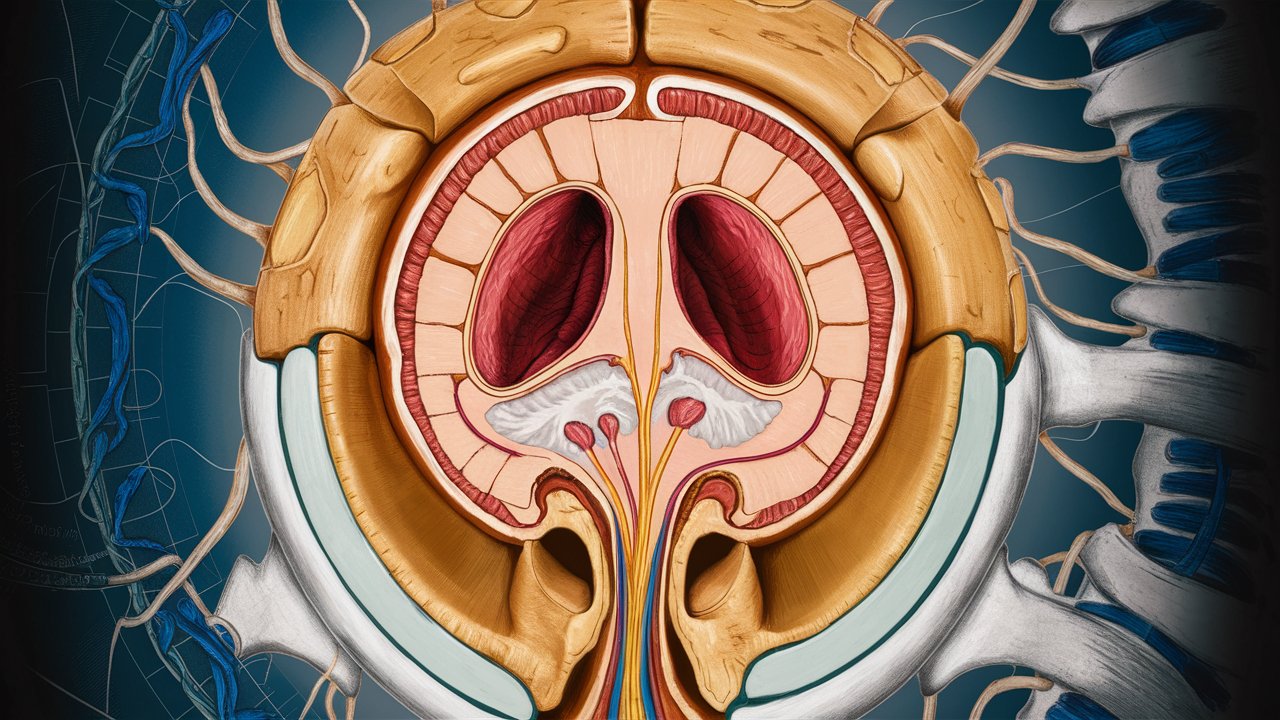
Conus Medullaris Syndrome is a rare but serious condition affecting the lower end of the spinal cord. This syndrome can lead to severe neurological issues, impacting mobility and sensation. Symptoms often include lower back pain, leg weakness, and bladder or bowel dysfunction. Early diagnosis and treatment are crucial to prevent permanent damage. Understanding the causes, symptoms, and treatment options can help manage this condition effectively. Whether you're a medical student, a healthcare professional, or someone seeking information for a loved one, this guide will provide essential insights into Conus Medullaris Syndrome. Let's dive into 30 key facts that will help you grasp the complexities of this condition.
What is Conus Medullaris Syndrome?
Conus Medullaris Syndrome (CMS) is a rare neurological condition that affects the lower end of the spinal cord. This syndrome can lead to various symptoms, impacting a person's daily life. Here are some fascinating facts about CMS.
-
Conus Medullaris Location: The conus medullaris is the tapered, lower end of the spinal cord, typically found around the L1-L2 vertebrae in adults.
-
Causes: CMS can result from trauma, tumors, infections, or spinal stenosis.
-
Symptoms: Common symptoms include lower back pain, leg weakness, and bladder or bowel dysfunction.
-
Nerve Damage: Damage to the conus medullaris can affect both motor and sensory nerves.
-
Diagnosis: MRI scans are often used to diagnose CMS, providing detailed images of the spinal cord.
Symptoms of Conus Medullaris Syndrome
Understanding the symptoms of CMS can help in early detection and treatment. Here are some key symptoms to watch for.
-
Lower Back Pain: Persistent lower back pain is a common symptom of CMS.
-
Leg Weakness: Weakness or paralysis in the legs can occur due to nerve damage.
-
Bladder Dysfunction: Difficulty in controlling the bladder is a significant symptom.
-
Bowel Dysfunction: Similar to bladder issues, bowel control can also be affected.
-
Sexual Dysfunction: CMS can lead to sexual dysfunction, impacting both men and women.
Causes of Conus Medullaris Syndrome
Several factors can lead to the development of CMS. Knowing these causes can aid in prevention and early intervention.
-
Trauma: Spinal injuries from accidents or falls can cause CMS.
-
Tumors: Tumors in the spinal cord can compress the conus medullaris.
-
Infections: Infections like spinal meningitis can lead to CMS.
-
Spinal Stenosis: Narrowing of the spinal canal can compress the spinal cord.
-
Herniated Discs: Discs that slip out of place can press on the conus medullaris.
Diagnosis and Treatment
Early diagnosis and appropriate treatment are crucial for managing CMS effectively. Here are some important facts about diagnosis and treatment.
-
MRI Scans: MRI is the gold standard for diagnosing CMS.
-
CT Scans: CT scans can also be used to detect abnormalities in the spinal cord.
-
Neurological Exams: Doctors perform neurological exams to assess nerve function.
-
Surgery: In severe cases, surgery may be required to relieve pressure on the spinal cord.
-
Physical Therapy: Physical therapy can help improve mobility and strength.
Living with Conus Medullaris Syndrome
Living with CMS can be challenging, but understanding how to manage the condition can improve quality of life. Here are some tips and facts about living with CMS.
-
Pain Management: Medications and therapies can help manage chronic pain.
-
Mobility Aids: Devices like walkers or wheelchairs can assist with mobility.
-
Bladder Training: Techniques and medications can help manage bladder dysfunction.
-
Support Groups: Joining support groups can provide emotional and practical support.
-
Regular Check-ups: Regular medical check-ups are essential for monitoring the condition.
Research and Future Directions
Ongoing research is crucial for improving the understanding and treatment of CMS. Here are some exciting developments in the field.
-
Stem Cell Therapy: Research is exploring the potential of stem cell therapy for nerve regeneration.
-
Gene Therapy: Scientists are investigating gene therapy as a possible treatment.
-
Advanced Imaging: New imaging techniques are being developed for better diagnosis.
-
Rehabilitation Programs: Innovative rehabilitation programs are being designed to improve outcomes.
-
Clinical Trials: Numerous clinical trials are underway to test new treatments and therapies.
Understanding Conus Medullaris Syndrome
Conus Medullaris Syndrome (CMS) is a rare but serious condition that affects the lower end of the spinal cord. Knowing the symptoms like severe back pain, bladder dysfunction, and lower limb weakness can help in early diagnosis. Immediate medical attention is crucial for better outcomes. Treatments often involve surgery, medications, and physical therapy to manage symptoms and improve quality of life.
Living with CMS requires ongoing care and support. Patients should work closely with healthcare providers to monitor their condition and adjust treatments as needed. Support groups and counseling can also offer emotional relief.
Understanding CMS empowers patients and caregivers to make informed decisions. Stay proactive in seeking medical advice and support. Early intervention can make a significant difference in managing this challenging condition.
Was this page helpful?
Our commitment to delivering trustworthy and engaging content is at the heart of what we do. Each fact on our site is contributed by real users like you, bringing a wealth of diverse insights and information. To ensure the highest standards of accuracy and reliability, our dedicated editors meticulously review each submission. This process guarantees that the facts we share are not only fascinating but also credible. Trust in our commitment to quality and authenticity as you explore and learn with us.


